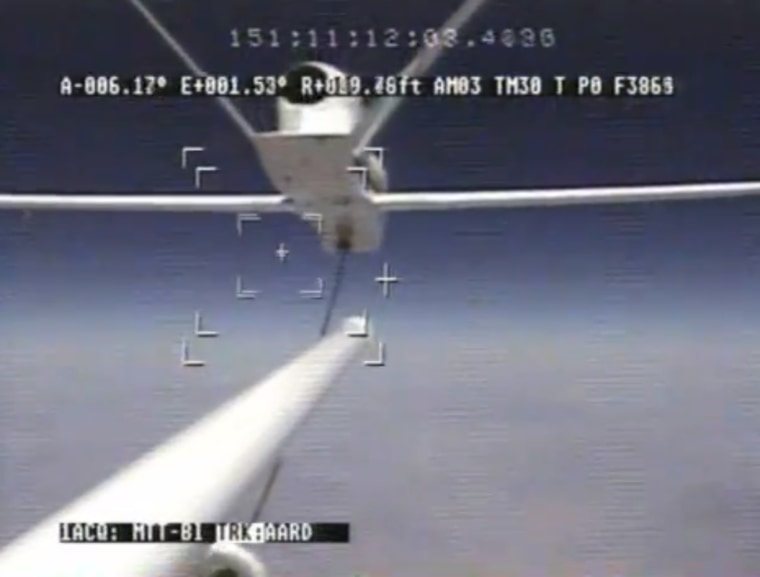U.S. military flight tests have shown how drones could handle midair refueling by themselves, without human pilots. That raises the possibility of automated "flying gas stations" topping off robotic aircraft over future battlefields.
The U.S. Defense Advanced Research Projects Agency (DARPA) recently flew two modified RQ-4 Global Hawk drones in close proximity to simulate midair refueling. The Global Hawks, huge drones with 131-foot wingspans used for high-altitude surveillance, flew in formation with less than 100 feet separating the refueling "probe" on one and refueling "receiver" on the other during a two-and-a-half hour flight test.
"The goal of this demonstration was to create the expectation that future [High Altitude Long Endurance] aircraft will be refueled in flight," said Jim McCormick, program manager at DARPA.
DARPA had kicked off its two-year Autonomous High-Altitude Refueling (AHR) program with the expectation that just one out of six aerial refueling attempts would prove successful. But the final analysis suggested drones could achieve a much better success rate of three out of five attempts.Neither Global Hawk drone needed human guidance during the final flight test at the high altitude of 44,800 feet (8 miles). The drones also maintained their tight formation despite turns and wind gusts of up to 23 mph.
The results from the AHR program that ended on Sept. 30 mean the U.S. military has a good chance of extending the duration and range of its drone swarms. Manned fighter jets and bombers already do midair refueling from standard tanker aircraft, but many drones can't match the speed, altitude or performance of existing tanker aircraft.
McCormick suggested that the drone flight-testing could lead to "non-traditional tanker concepts," perhaps a reference to automated drone tankers. Such an idea could work very well for the range of midsize or large drones that depend on jet fuel.
The U.S. military has also played with other refueling ideas for drones. Lasers could do midair recharging for smaller, battery-powered drones, such as the Stalker drone flown by U.S. Special Forces. Meanwhile, the U.S. Navy has plans for its aircraft-size X-47B drone — designed to take off and land on Navy aircraft carriers — to autonomously handle aerial refueling with standard tanker aircraft.
Follow TechNewsDaily on Twitter @TechNewsDaily, or on Facebook.
- Ten Military Aircraft that Never Made it Past the Test Phase
- Electric Plane Turns to Drones as Flying Batteries
- 10 Technologies Poised to Transform our World
Copyright 2012 TechNewsDaily, a TechMediaNetwork company. All rights reserved. This material may not be published, broadcast, rewritten or redistributed.
